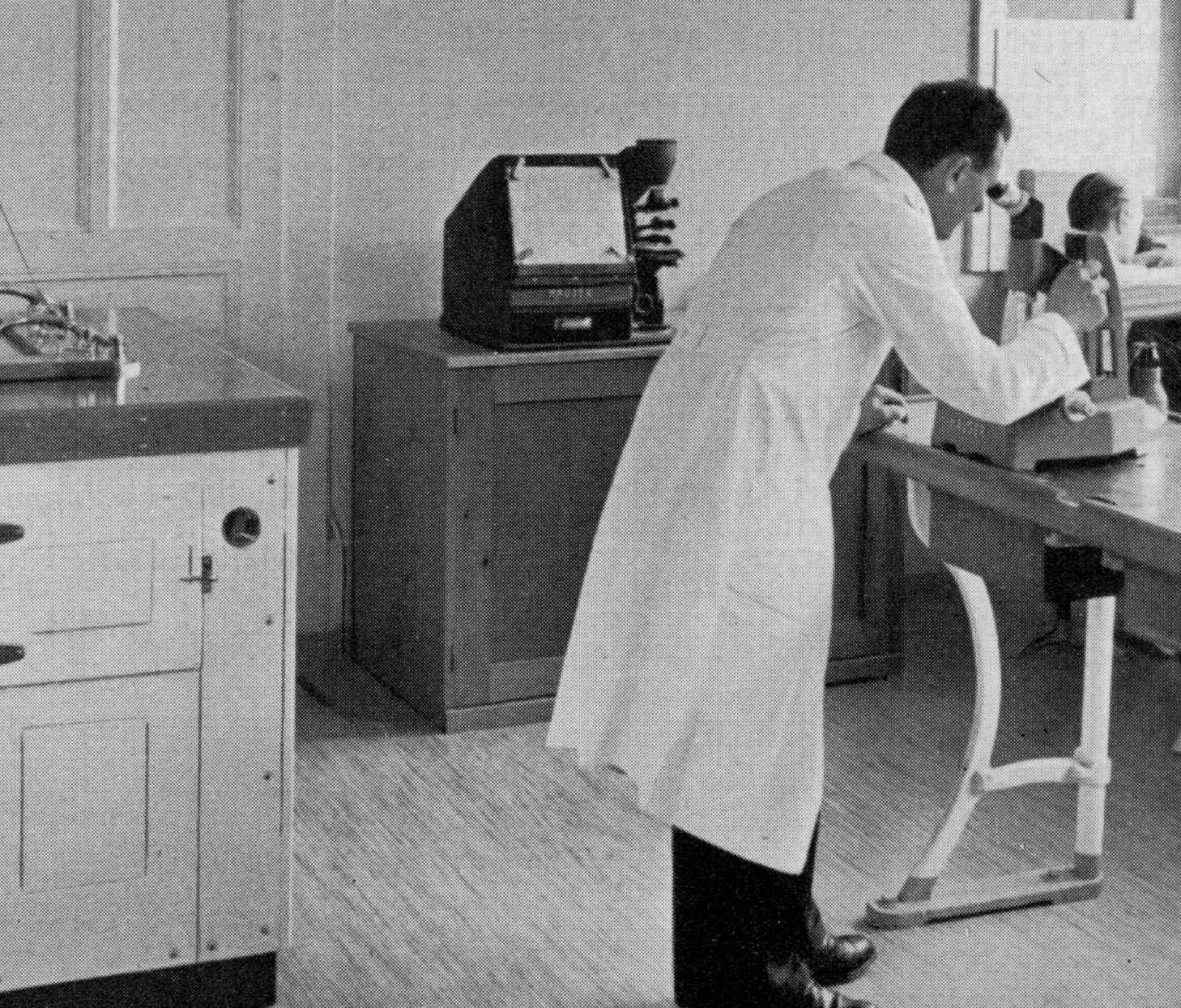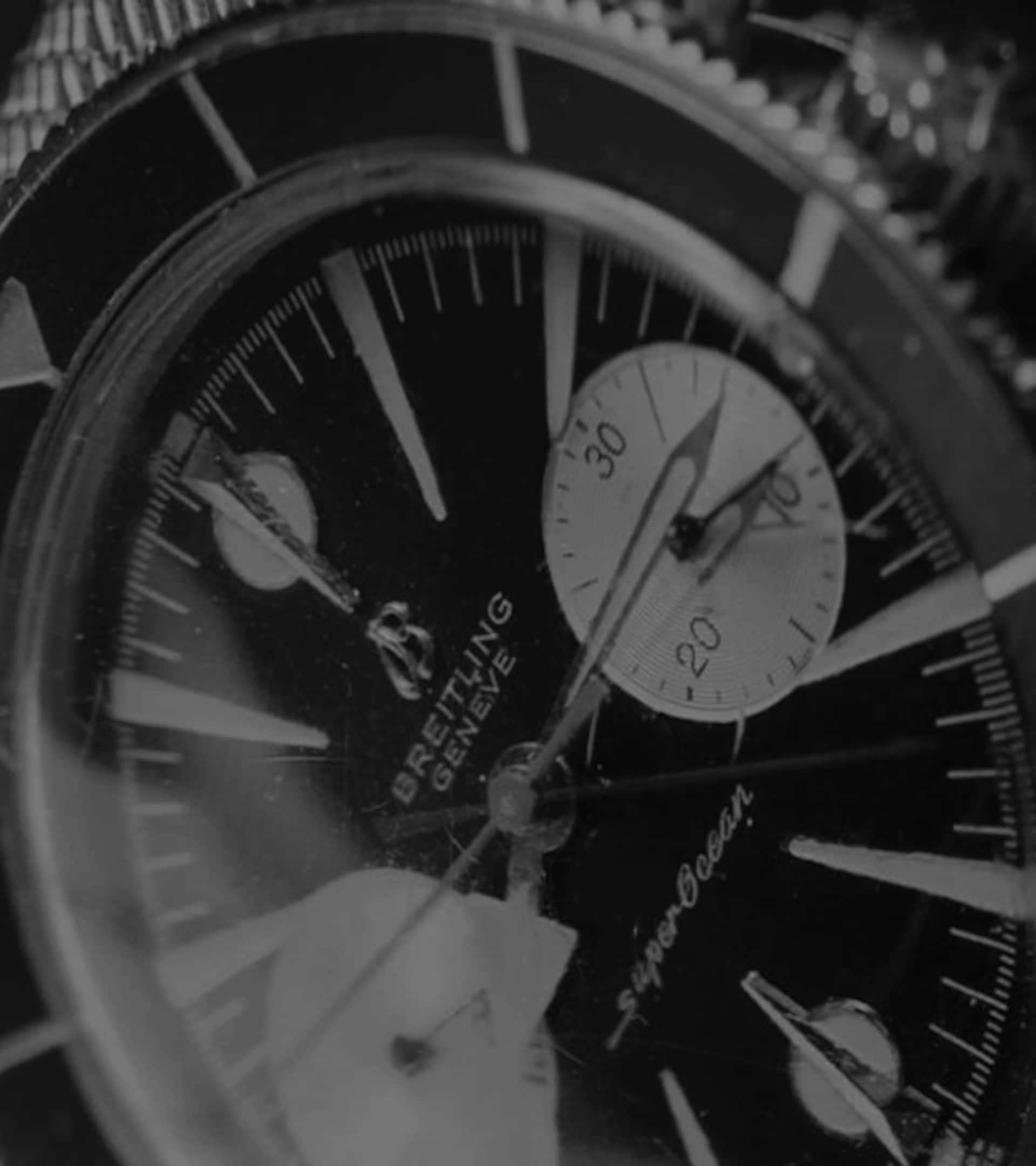

1950s-1960s
CHAPTER 3: AIR, LAND, AND SEA
AIR, LAND, AND SEA
CHAPTER 3
In the 1950s, a Golden Age began as civil aviation boomed, with airliners replacing ocean liners and post-war prosperity fueling leisure motoring and nautical pursuits. Seizing these opportunities, Willy Breitling designed specialized watches. The Navitimer, a pilot’s watch, capitalized on commercial flight with cockpit features, while the SuperOcean pushed underwater boundaries, catering to the rising popularity of diving and water sports. These creations reflect shifting trends and Breitling’s blend of expertise with modern travel demands on air, land, and sea.
1952
NAVITIMER
Willy Breitling set out to develop a wrist-worn chronograph that would allow pilots to perform all necessary flight calculations, including average speed, distance traveled, fuel consumption and rate of climb. His idea was to adapt the Chronomat’s logarithmic slide rule for aviation purposes and integrate it into a rotating bezel, capped with small beads to make it easy to manipulate even with a pilot’s gloved hands.
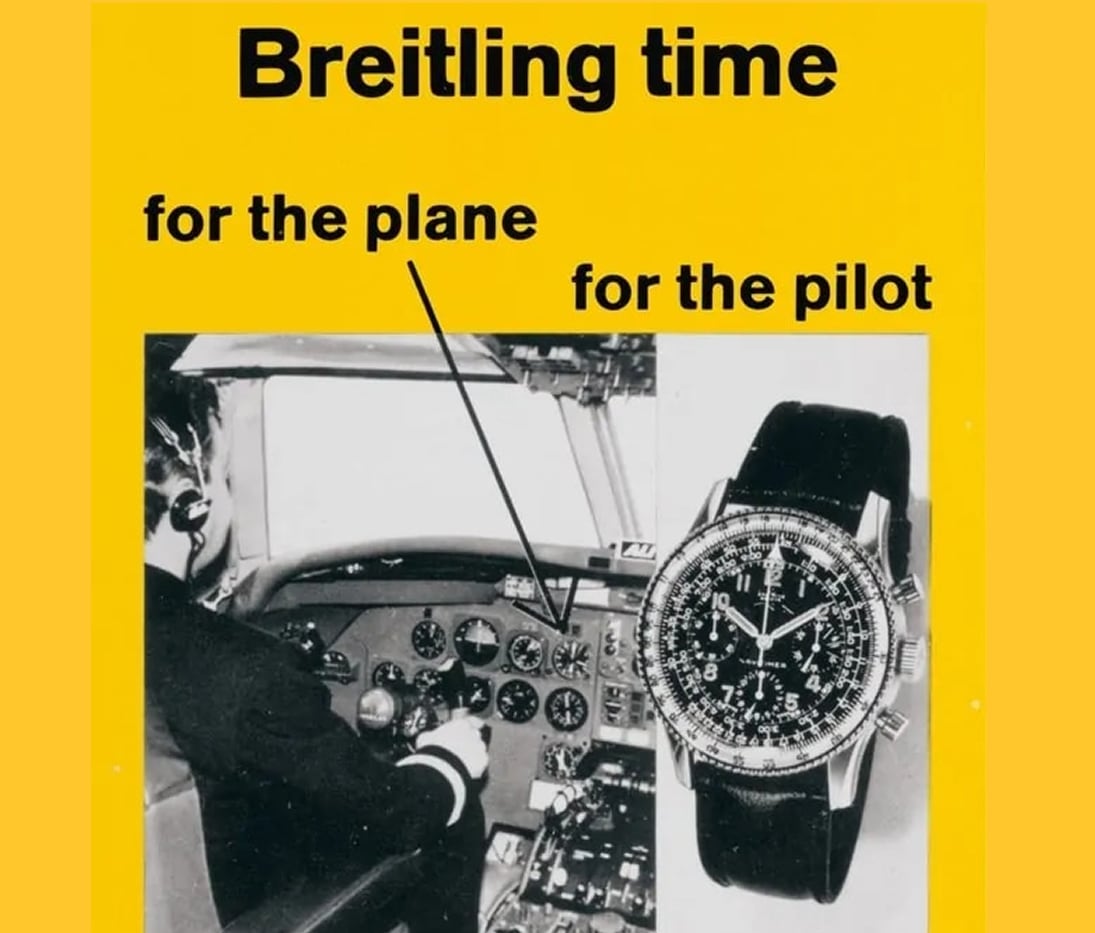

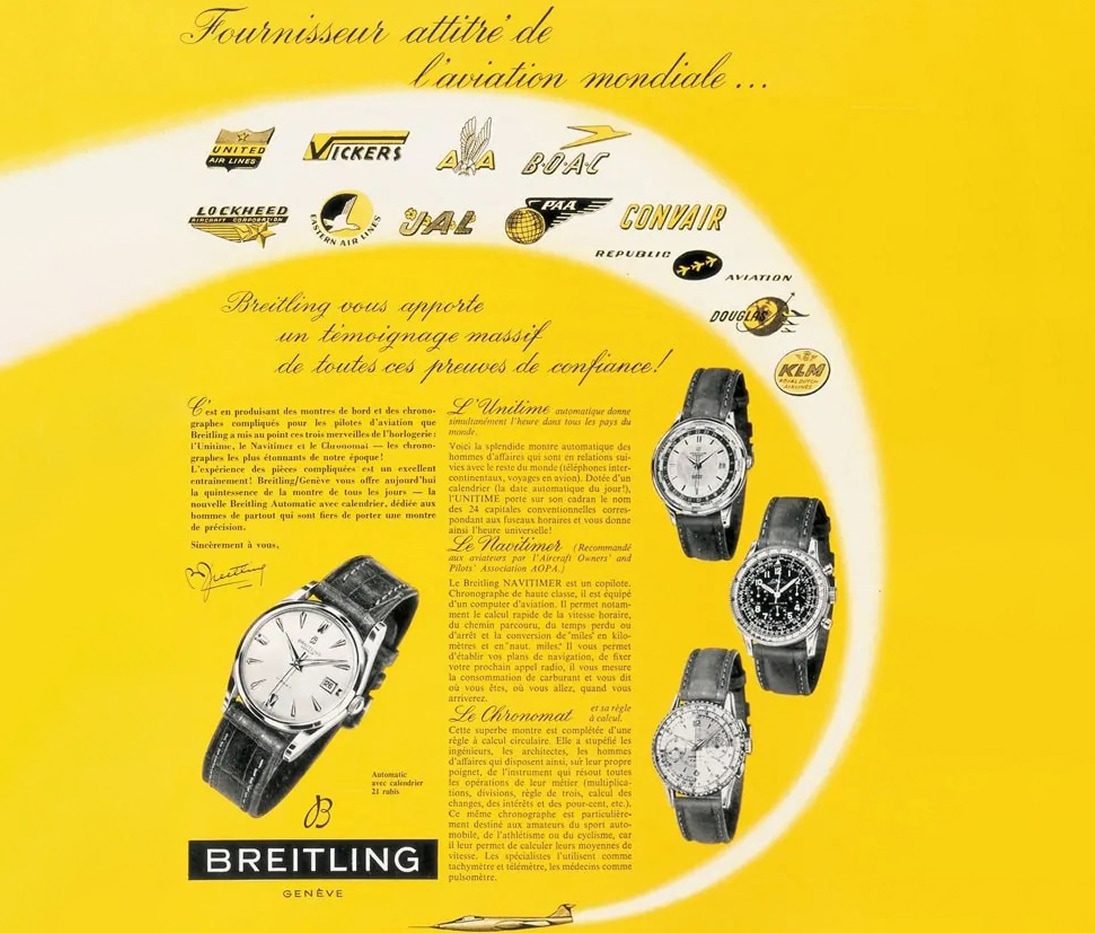

Two years later, the Aircraft Owners and Pilots Association (AOPA), the largest pilots’ club in the world, announced the design as its official timepiece. The Navitimer—its name a combination of “navigation” and “timer”—was born. Breitling’s unprecedented “flight computer” was quickly adopted by pilots worldwide.
Originally commissioned by the AOPA and initially unavailable to the public, the Navitimer’s success among its members convinced Willy Breitling to include it in the brand’s catalog. It quickly became a cockpit essential and an icon—not to mention one of the longest continuously produced wristwatches of all time.
1953
CO-PILOT
While the Navitimer would prove the darling of airline pilots who relied on its computational slide rule, Willy Breitling developed yet another pilots’ chronograph whose focus was pure legibility. Enter the ref. 765 AVI, aka the “Co-Pilot,” a chronograph designed to be a trustworthy companion to aviators of all stripes. The clean, easy-to-read dial with large, lumed numerals perfectly embodied the rugged, reliable, and efficient tool watches that were the hallmark of Breitling’s HUIT Aviation department.
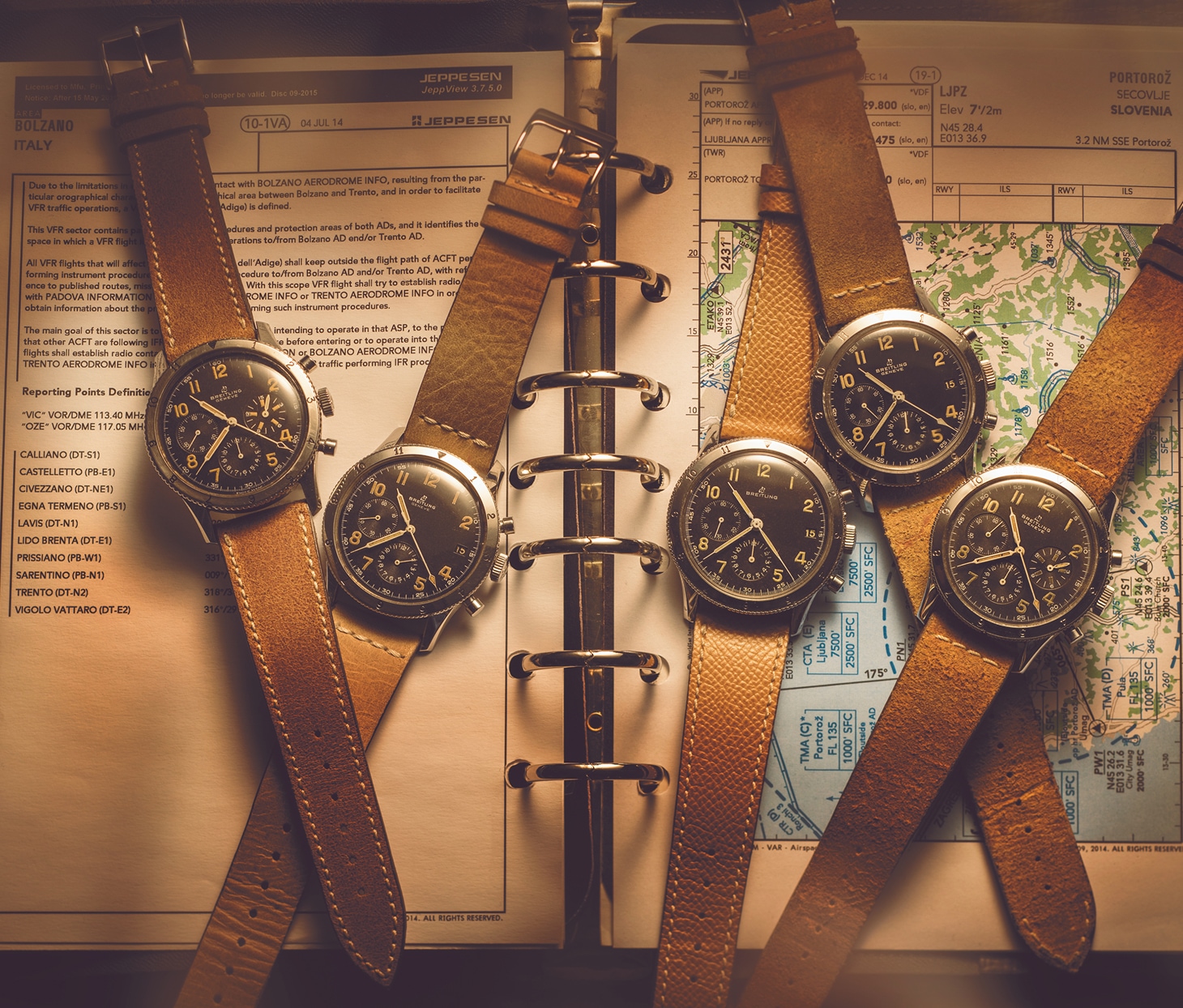

1957
SUPEROCEAN
Marking his 25th year at the helm, Willy Breitling turned his attention to the ocean, spurred by Jacques Cousteau’s undersea documentaries and growing trend of recreational scuba diving. Professionals and enthusiasts needed reliable underwater instruments. In 1957, Breitling responded with the SuperOcean in chronograph and time-only editions.
Both were watertight to 200 meters (660 ft)—a remarkable feat at the time—not to mention, his SuperOcean ref. 807 was the very first dive chronograph. Every detail of the construction ensured optimal functionality, readability, and safety underwater.
With this new addition, Breitling is now present in the air, on land, and at sea.
1964
TOP TIME
Willy Breitling introduced the Top Time collection, aimed at “young and active professionals.” With elegant yet unconventional designs—including cushion-shaped cases and graphic dials—it appealed to fashionable men and women alike. The name was deliberately short, punchy, and in English to reflect its modern energy. The “unconventional chronograph” quickly became a fashion must-have, gracing the pages of Time, Life, and Harper’s Bazaar. Demand soared during the late 1960s, propelled by the watch’s bold proportions and stylish vibe. The film industry soon followed suit, featuring the Top Time on the silver screen and cementing its cult status.
James Bond, played by Sean Connery, wore a “Top Time in 1965’s Thunderball.”
MARCEL ROBERT- THE MAN BEHIND THE SCENES
Willy Breitling may have had the drive and vision to transform the brand, but he couldn’t have done it without the help of Marcel Robert.
In his nearly 50-year career with Breitling, Robert played a pivotal role in developing its most important innovations, from fashioning the first patented dual-pusher to co-developing the world’s first automatic chronograph movement in 1969.
